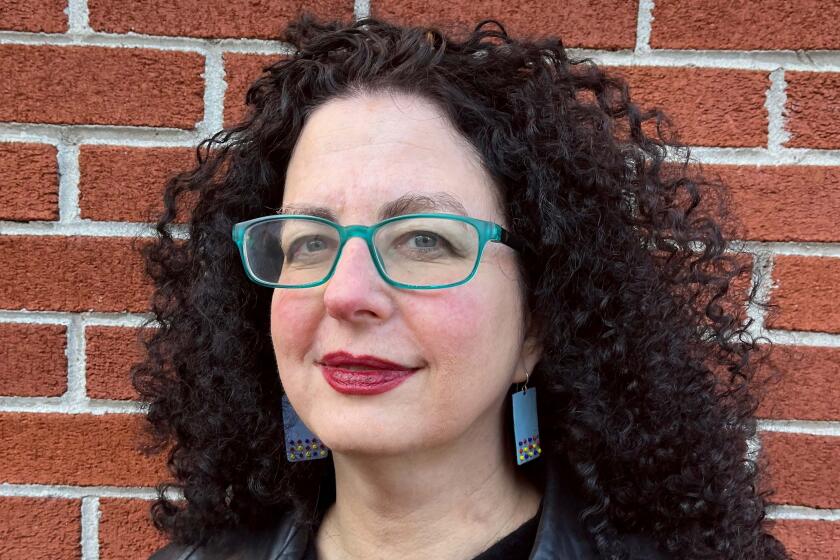The Lady and the Chekists : A RADIANCE IN THE GULAG <i> by Nijole Sadunaite (Trinity Communications: $9.95; 148 pp.) </i>
While any sign of a “thaw” in Kremlin intractability is devoutly to be cultivated by the West, Soviet Christians may be years away from feeling the benefits of glasnost just yet, however much they may wish it to be otherwise. This little book should help to explain why.
On the one hand, it narrates in fascinating detail the resurgence of fierce persecution of Lithuanian Catholics by the Communists in the last decade or so. In a glimpse at the dark side of their daily life, Nijole Sadunaite’s tale bears out in full Aleksandr Solzhenitsyn’s assessment that religious repression represented the Kremlin’s unrelenting effort to impose a militantly atheistic ideology at every level of society, by deception whenever possible, by force if necessary.
On the other hand, this book is only peripherally about ideology. It is autobiographical in character, a richly textured narrative of faith in action against overwhelming odds.
The journal includes a brief description of the author’s early family life in a tiny Baltic country that was invaded and occupied by both the Nazis and the Soviet Red Army in the 1940s. It then moves into a much more detailed account of her arrest, trial and imprisonment as an adult, and the official harassment that has left her undaunted in spirit since her release from internal exile in 1980.
As Thomas Bird points out in a short introduction. “A Radiance in the Gulag” bears favorable comparison to “The Diary of Anne Frank” as a young woman’s testament to courage and hope in the face of tyranny, darkness and despair. The title was chosen by her U.S. publisher to best capture the significance of the author’s work, which was smuggled out of Lithuania in two segments to friends in the West. Its “radiance” stems largely from Sadunaite’s readiness to carry her cross so cheerfully, coupled with a remarkable ability to put her cares aside and reach out to beleaguered fellow believers along the way.
The venturesome personality traits that sometimes tested her invalid mother’s patience when she was a child persisted into adulthood for Sadunaite. The move that eventually got her into hot water with state authorities involved her decision to join hands with the creators of the Chronicle of the Catholic Church in Lithuania, the clandestine journal of the state’s persecution of believers that first appeared in print in 1972.
It becomes obvious very early in the book that the occupiers of her homeland were not content with merely keeping religious believers safely in tow. The “Chekists” (as Lithuanians call KGB agents: The Cheka was the original Soviet secret police founded by Lenin in 1918) wanted to eradicate Catholic faith and culture entirely in order to “liberate” the Lithuanians from their “bourgeois” Christian past. As the author notes at one point, it became almost axiomatic that anyone brought to trial for any connection with the Chronicle would be charged with “religious fanaticism.”
So it was with Sadunaite. She was tailed for several years by the Chekists, until she was finally arrested at her apartment in 1974. Her only crime was typing up copies of the Chronicle for redistribution to her fellow Lithuanians.
Despite the weeks she spent in a Soviet dungeon, the show trial and conviction that followed and her subsequent incarceration in a labor camp, Sadunaite remained amazingly free of any sign of bitterness toward life. Her ordeal, incidentally, included a monthlong trip from Vilnius to the infamous Mordovia prison camp on an overcrowded transport train, a trip on which the food was so bad that she lost 33 pounds along the way. Yet her willingness to speak the truth, to defend her faith and to confront her accusers with painful glimpses of their own spiritual emptiness--coupled with her love for fellow prisoners in the gulag and her willingness to assist them in any way she could--shines through unpretentiously for page after page.
This book may also contain some enlightening insights for those “progressive” Western Christians interested in ecumenism. Few observers would deny the value of the ecumenical dialogue that has gone forward in our own country by fits and starts, even though it has sometimes been taken over by politicized clergymen with an agenda of their own. But meanwhile, ecumenism-in-action was alive and well in labor camps behind the Iron Curtain on a more practical, down-to-earth level. Lithuanian Catholics and other Soviet Christians of all kinds were learning the meaning of what used to be called the spiritual and corporal works of mercy by living them for each other’s benefit.
Sadunaite’s reflections contain a series of warm and complimentary anecdotes about Baptists, Russian Orthodox and other feminine co-religionists who suffered imprisonment with her, on one charge or another. Amid the direst of prison conditions, many of them showed an unhesitating willingness to share with each other the most meager of food supplies and other modest amenities that came their way.
For trendier Christians in the West, private prayer and fasting and the shared suffering of the Cross have almost become the quaint relics and symbols of an outmoded past. For Sadunaite and many of her fellow Christians in jail, they have been transformed into signposts on the road to personal purification.
Her story is a glistening little gem to add to the treasury of Christian literature.
More to Read
Sign up for our Book Club newsletter
Get the latest news, events and more from the Los Angeles Times Book Club, and help us get L.A. reading and talking.
You may occasionally receive promotional content from the Los Angeles Times.






